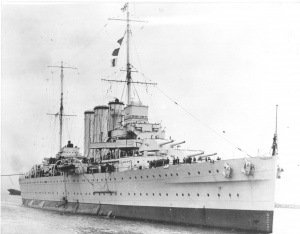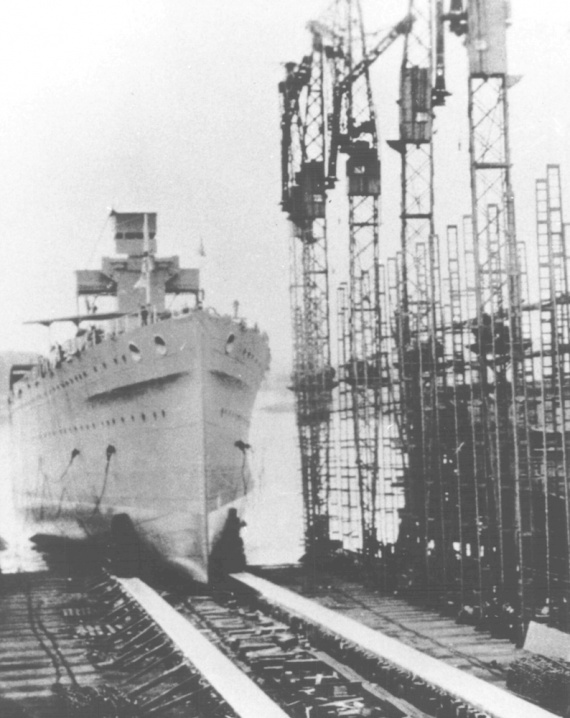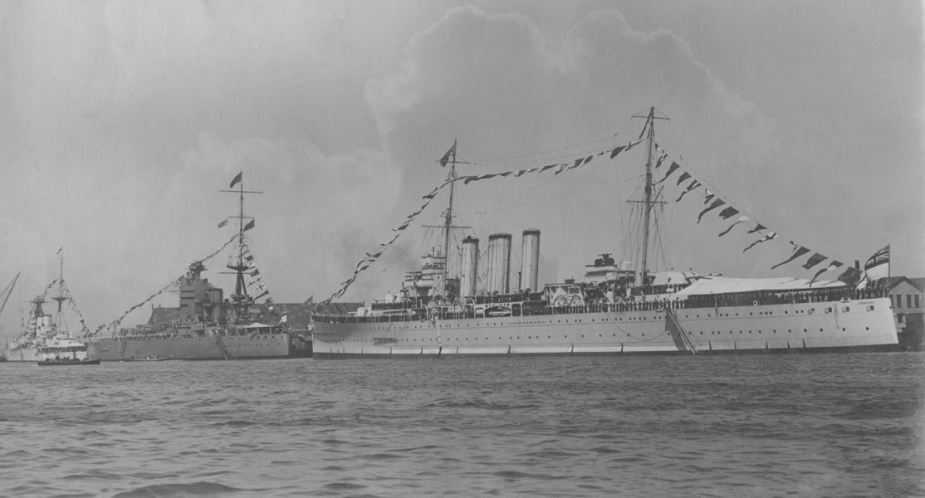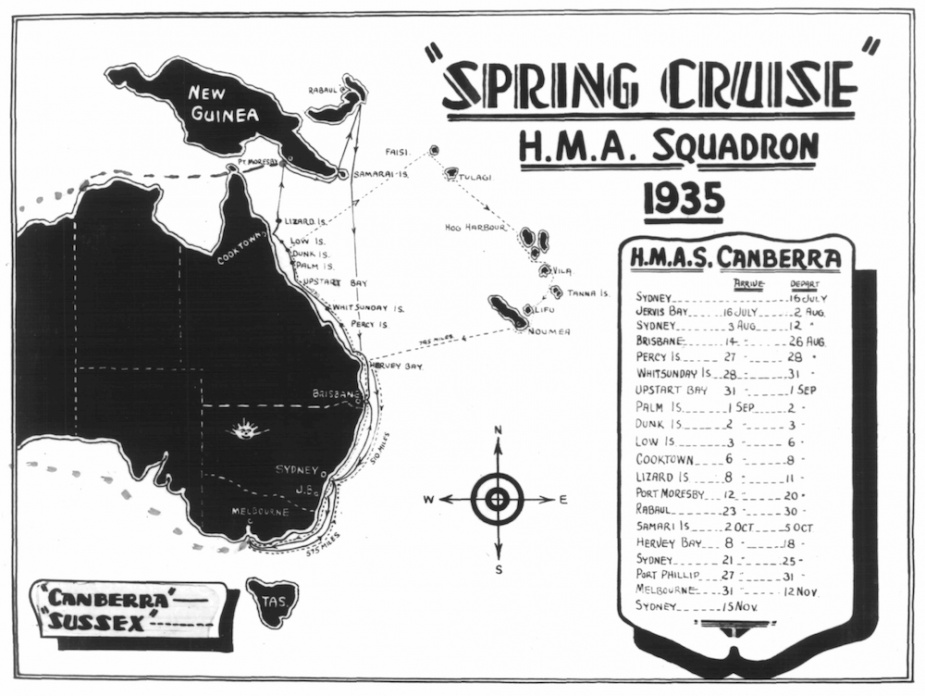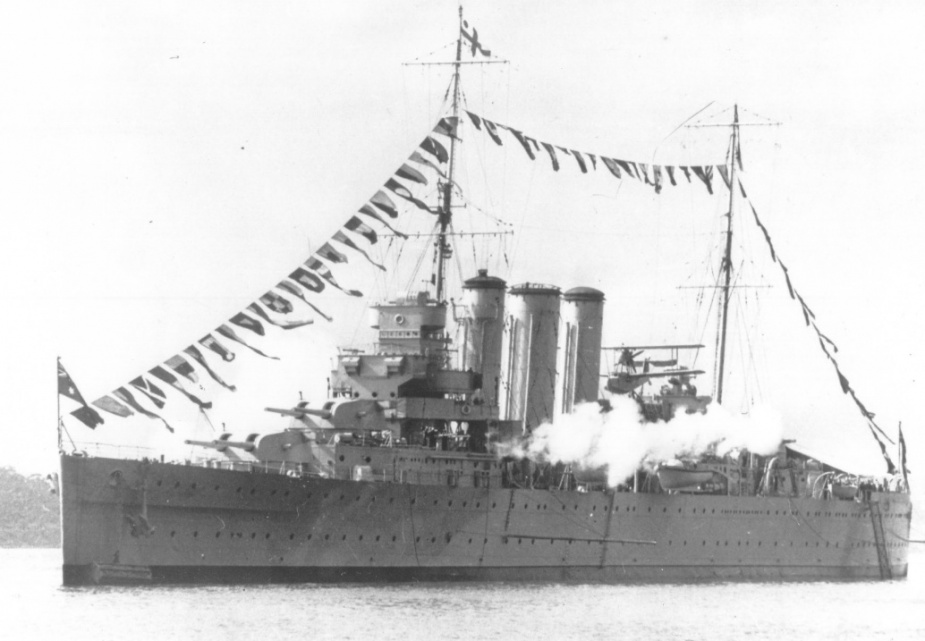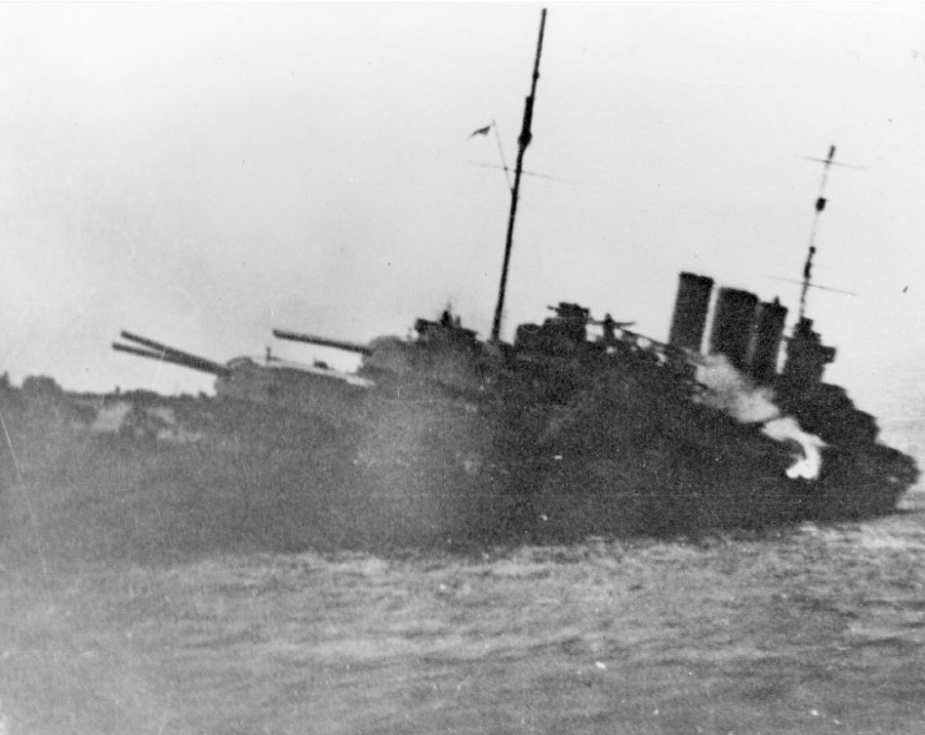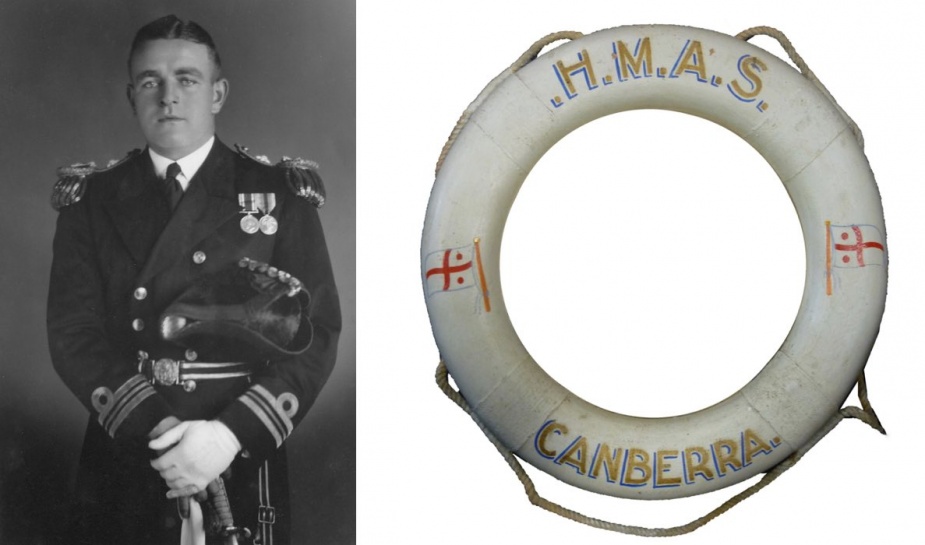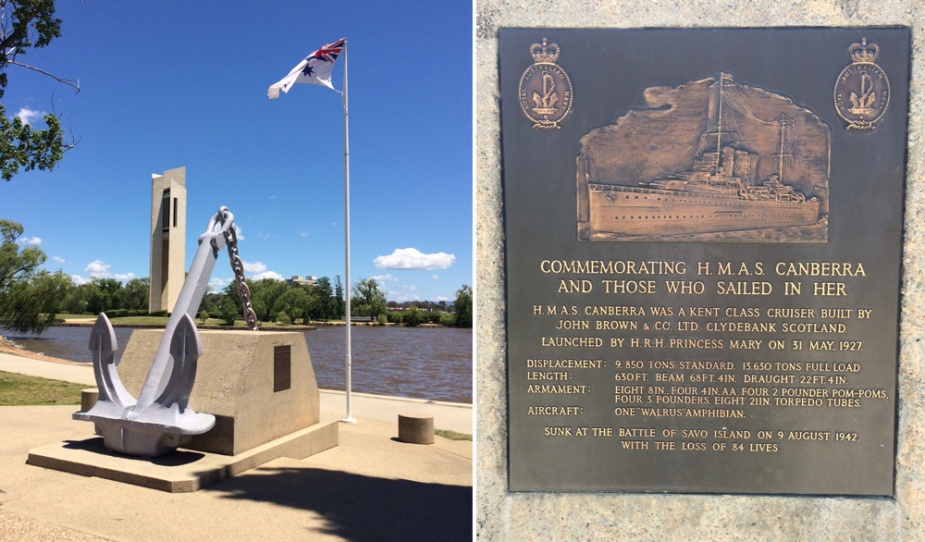HMAS Canberra (I)
| Class |
County Class |
|---|---|
| Type |
Heavy Cruiser |
| Pennant |
D33 |
| Builder |
John Brown & Co Ltd, Clydebank, Scotland |
| Laid Down |
9 September 1925 |
| Launched |
31 May 1927 |
| Launched by |
Her Royal Highness Princess Mary |
| Commissioned |
9 July 1928 |
| Decommissioned |
9 August 1942 |
| Fate |
Lost in action on 9 August 1942 |
| Dimensions & Displacement | |
| Displacement | 9850 tons |
| Length | 630 feet (overall) |
| Beam | 68 feet 4 inches |
| Draught |
|
| Performance | |
| Speed | 31½ knots |
| Complement | |
| Crew | 679 (710 as flagship) |
| Propulsion | |
| Machinery | Brown-Curtis geared turbines, 4 screws |
| Horsepower | 80,000 |
| Armament | |
| Guns |
|
| Awards | |
| Battle Honours | |
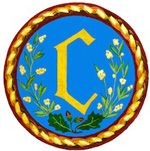
HMAS Canberra was one of two 10,000 ton County Class Heavy Cruisers ordered by the Australian Government as part of a five year naval development program begun in 1924 and completed in 1929. She commissioned at Clydebank on 9 July 1928, two months after her sister ship, HMAS Australia, under the command of Captain George L Massey RN.
She was built to the Kent Class design of County Class Cruisers, her sister ships being HMAS Australia and HM Ships Kent, Berwick, Cornwall, Cumberland and Suffolk.
After some five months in British home waters, Canberra sailed from Portsmouth for Australia on 4 December 1928 and arrived at Fremantle on 25 January 1929, having sailed via Gibraltar, Freetown, Lagos, Cape Town, Simonstown and Durban.
The new cruiser remained in Australian home waters until September 1931 when she made her first voyage outside of the Australia Station to visit New Caledonia and Fiji.
In the following nine years leading up to the outbreak of the World War II, Canberra remained in commission with several periods as the Flagship of the Australian Squadron. She visited the China Station in 1932 and again in 1937. New Zealand ports saw her on three occasions but for the remainder of the time it was the routine cruising of the peace time navy in home waters. In 1934 she acted as escort to His Royal Highness The Duke of Gloucester during his visit in HMS Sussex.
At the outbreak of hostilities in September 1939, Canberra began her war time career patrolling and escorting in home waters and the Tasman Sea under the command of Captain Wilfrid R Patterson, CVO, RN, a service which occupied the cruiser for the first nine months of the war.
In June 1940 Captain Harold B Farncomb, MVO, RAN assumed command and the following month Canberra began a period of service in the Indian Ocean on escort duty from Fremantle to Colombo and Cape Town. In July she made an unsuccessful search for the German raider Atlantis, then at large on the shipping routes leading from Africa to India and the Malay States.
In November 1940 she rescued survivors of the SS Port Brisbane and carried out a prolonged but again unsuccessful search for her attacker, the German raider Pinguin, then en route for Antarctica after mining Australian ports.
In 1941 Canberra continued her Indian Ocean escort and patrol duties, making further surface raider searches in January and again in February when she took part in the fruitless hunt for the battleship Admiral Scheer. In March 1941, however, the cruiser reaped the reward of the constant patrolling, when in the company of HMNZS Leander she intercepted the German supply ship Coburg and the ex-Norwegian tanker Ketty Brovig, which had been taken in prize the previous month by the raider Atlantis.
In mid June 1941 Canberra visited the west Indian Ocean for the last time and departing Zanzibar proceeded for Colombo. After a brief period escorting in Indian waters, she returned to Australia during the last week of July. The second half of 1941 saw Canberra operating in the eastern Indian Ocean escorting convoys from Australia to Singapore and Ceylon and in the Tasman Sea.
When war broke out with Japan on 8 December 1941, Canberra was berthed in Sydney Harbour with more than 175,000 miles of wartime operational steaming to her credit.
Following the outbreak of the Pacific War she continued her role of escort cruiser, convoying troops to New Guinea in January 1942 and convoys to the Malayan/Java theatre. On 7 February 1942 she docked in Sydney for extensive refit work that was not completed until mid May, when she escorted a convoy south to Melbourne. Back in Sydney she lay at anchor not far from the cruiser USS Chicago on the night of the Japanese midget submarine attack on 31 May/1 June 1942.
Captain Frank E Getting RAN assumed command of Canberra in June 1942. During the same month Canberra took part in offensive sweeps in the Coral Sea as part of Task Force 44, which included US Ships Chicago and Salt Lake City.
In August 1942 Canberra operated with the naval force supporting the American landings at Guadalcanal and Tulagi, operations which ended with her loss in the Battle of Savo Island on 9 August 1942.
Canberra was struck by two torpedoes on her starboard side and over 20 salvoes of 8-inch shellfire. With power lost and the ship listing, the wounded and survivors were transferred to USS Patterson and USS Blue.
Rear Admiral RK Turner USN ordered that Canberra be abandoned and sunk if she could not steam by 06:30. Once all the survivors had been evacuated, and acting in accordance with the orders of Rear Admiral Turner and Rear Admiral VAC Crutchley, VC, DSC, RN who was officer in tactical command of the combined force of Australian and American cruisers and destroyers at Guadalcanal, USS Selfridge fired 263 5-inch shells and four torpedoes into Canberra, although she refused to sink. Eventually a torpedo fired by USS Ellet administered the final blow. Canberra sank at about 8:00 am on 9 August 1942.
There were 193 casualties amongst the 819 personnel serving in Canberra on 9 August 1942. Missing believed killed were nine officers (including one Royal Australian Air Force and one United States Navy) and 65 ratings (including three Royal Australian Air Force and two Royal Navy); one officer (Captain Getting) and nine ratings (including one Royal Australian Air Force) died of wounds; and 10 officers (including one Royal Navy), 96 ratings (including two Royal Australian Air Force, one Royal Navy and two United States Navy) and three civilian Canteen Staff were wounded.
Note: This video is hosted on YouTube. Department of Defence users will not be able to view this video on the Defence Protected Network.
This cine film has been placed online as part of the Sea Power Centre - Australia's ongoing archival digitisation program.
To honour Canberra, the US Navy commissioned the Baltimore Class heavy cruiser, USS Canberra in 1943, the only US Navy ship thus far to be named for a foreign capital. In February 2018, continuing the tradition of honouring HMAS Canberra (I), the President of the United States of America announced that a future Independence class Littoral Combat Ship (LCS 30), will be the second US Navy ship to carry the name USS Canberra.
Further reading
‘HMAS Canberra’ by Alan Payne. Published by The Naval Historical Society of Australia, Garden Island, 1973.

